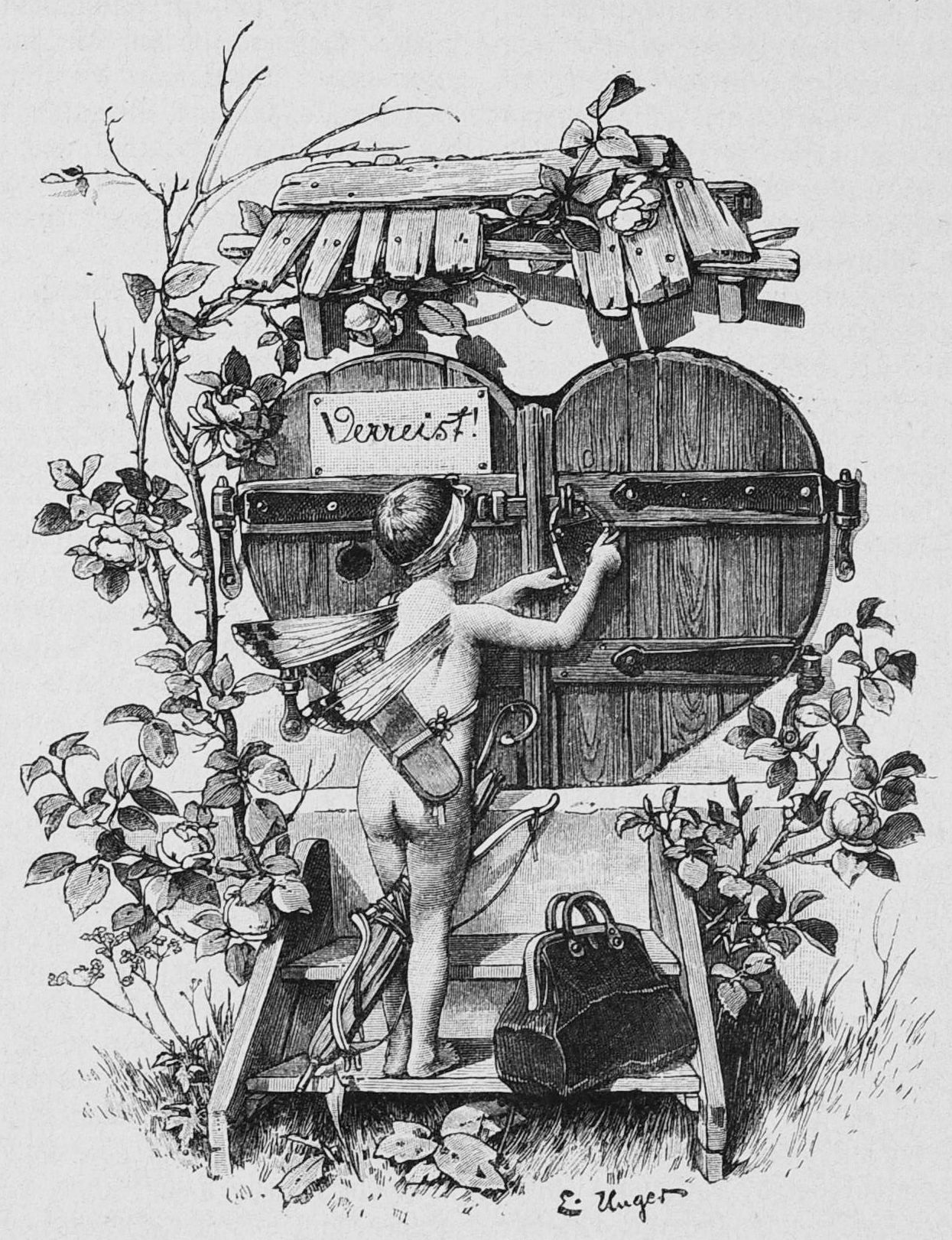Cherubim
A cherub (/ˈtʃɛrəb/; plural cherubim; Hebrew: כְּרוּב kərūḇ, pl. כְּרוּבִים kərūḇīm, likely borrowed from a derived form of Akkadian: 𒅗𒊒𒁍 karābu "to bless" such as 𒅗𒊑𒁍 kāribu "one who blesses," a name for the lamassu) is one of the angels who directly attend to God, according to Abrahamic religions. The numerous depictions of cherubim assign to them many different roles, such as protecting the entrance of the Garden of Eden.
In Jewish angelic hierarchy, cherubim have the ninth (second-lowest) rank in Maimonides' Mishneh Torah (12th century), and the third rank in Kabbalistic works such as Berit Menuchah (14th century). De Coelesti Hierarchia places them in the highest rank alongside Seraphim and Thrones.
In the Book of Ezekiel and (at least some) Christian icons, the cherub is depicted as having two pairs of wings, and four faces: that of a lion (representative of all wild animals), an ox (domestic animals), a human (humanity), and an eagle (birds). Their legs were straight, the soles of their feet like the hooves of a bull, gleaming like polished brass. Later tradition ascribes to them a variety of physical appearances. Some early midrashic literature conceives of them as non-corporeal. In Western Christian tradition, cherubim have become associated with the putto (derived from classical Cupid/Eros), resulting in depictions of cherubim as small, plump, winged boys.
According to Meteorologica Cosmica by Robert Fludd, this choir is ruled over by Archangel Raziel and Archangel Jophiel.
Hebrew-Assyrian origins
Aside from Ezekiel's vision, no detailed attestations of cherubim survive, and Ezekiel's description of the tetramorph being may not be the same as the cherubim of the historic Israelites. All that can be gleaned about the cherubim of the Israelites come from potential equivalences in the cultures which surrounded them.
Delitzch (Assyrisches Handwörterbuch) connects the name keruv with Assyrian kirubu (a name of the shedu) and karabu ("great, mighty"). Karppe (1897) glosses Babylonian karâbu as "propitious" rather than "mighty". Dhorme (1926) connected the Hebrew name to Assyrian kāribu (diminutive kurību), a term used to refer to intercessory beings (and statues of such beings) that plead with the gods on behalf of humanity. The folk etymological connection to a Hebrew word for "youthful" is due to Abbahu (3rd century).
The Israelite cherubim are described as fulfilling a variety of functions - most often, they are described as bolstering the throne of Yahweh. Ezekiel's vision of the cherubim also emulate this, as the conjoined wingspan of the four cherubim are described as forming the boundary of the divine chariot. Likewise, on the so-called "mercy seat" of the Ark of the Covenant, two cherubim are described as bounding the ark and forming a space through which Yahweh would appear – however, details about these cherubim aside from the instruction that they be beaten out of the sides of the ark are missing from the text. Furthermore, one might wonder how the creators of the ark knew what a cherub was supposed to look like.
The status of the cherubim as constituting a sort-of vehicle for Yahweh is present in Ezekiel's visions, the Books of Samuel, the parallel passages in the later Books of Chronicles, and passages in the early Psalms: for example, "and he rode upon a cherub and did fly: and he was seen upon the wings of the wind." The traditional Hebrew conception of cherubim as guardians of the Garden of Eden is backed by the Semitic belief of beings of superhuman power and devoid of human feelings, whose duty it was to represent the gods, and as guardians of their sanctuaries to repel intruders; these conceptions in turn are similar to an account found on Tablet 9 of the inscriptions found at Nimrud.
Physical appearance
The appearance of the cherubim continue to be a subject of debate. Mythological hybrids are common in the art of the Ancient Near East. One example is the Babylonian lamassu or shedu, a protective spirit with a sphinx-like form, possessing the wings of an eagle, the body of a lion, and the head of a king. This was adopted largely in Phoenicia. The wings, because of their artistic beauty, soon became the most prominent part, and animals of various kinds were adorned with wings; consequently, wings were bestowed also upon man, thus forming the stereotypical image of an angel. The Egyptian decans were known to take different forms depending on their duties and their position in the sky.
William F. Albright (1938) argued that "the winged lion with human head" found in Phoenicia and Canaan from the Late Bronze Age is "much more common than any other winged creature, so much so that its identification with the cherub is certain." A possibly related source is the human-bodied Hittite griffin, which, unlike other griffins, appear almost always not as a fierce bird of prey, but seated in calm dignity, like an irresistible guardian of holy things; some have proposed that the word griffin (γρύψ) may be cognate with cherubim. Interestingly, while Ezekiel initially describes the tetramorph cherubim as having "the face of a man... the face of a lion... the face of an ox... and... the face of an eagle;" in the tenth chapter this formula is repeated as "the face of the cherub... the face of a man... the face of a lion... the face of an eagle;" which (given that "ox" has apparently been substituted with "the cherub") some have taken to imply that cherubim were envisioned to have the head of a bovine.
In particular resonance with the idea of cherubim embodying the throne of God, numerous pieces of art from Phoenicia, Egypt, and even Tel Megiddo in northern Israel depict kings or deities being carried on their thrones by hybrid winged-creatures. If this largely animal-esque appearance is how the ancient Israelites envisioned cherubim, it raises more questions than it answers. For one, it is difficult to visualize the cherubim of the Ark of the Covenant as quadrupedal creatures with backward-facing wings, as these cherubim were meant to face each other and have their wings meet, while still remaining on the edges of the cover, where they were beaten from. At the same time, these creatures have little-to-no resemblance to the cherubim in Ezekiel's vision. On the other hand, even if cherubim had a more humanoid form, this still would not entirely match Ezekiel's vision, and likewise seemingly clashes with the apparently equivalent archetypes of the cultures surrounding the Israelites, which almost uniformly depicted beings which served analogous purposes to Israel's cherubim as largely animalistic in shape. All of this may indicate that the Israelite idea of what a cherub looked like was subject to change, and perhaps not wholly consistent.

